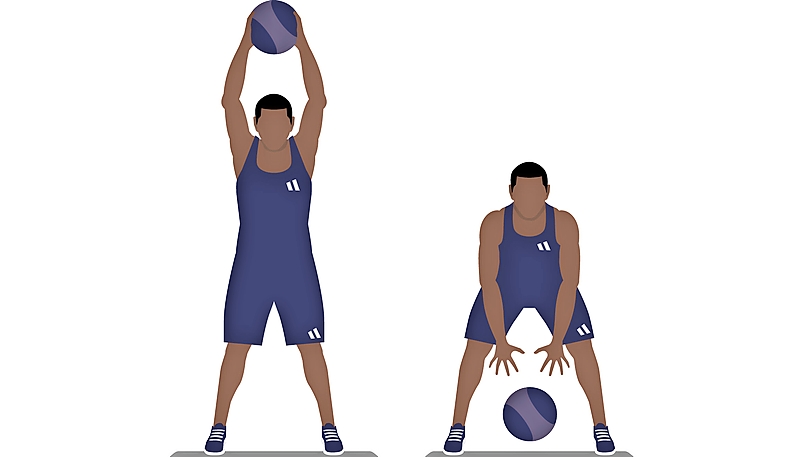Neuromuscular Training
By Naperville Magazine
Appears in the December 2018 issue.
Strong defense against age-related issues
Aging contributes to a decline in our ability to perform common motor tasks and cognitive functions, and that can increase risk of falls, impact quality of life, and hinder independence. But thankfully the loss of functional movement due to age—such as balance, coordination, agility, reaction, power, and speed—can be improved by developing motor learning skills.
Research shows that neuromuscular training exercises can reduce the physical and biological damage happening in our bodies from the aging process. As a personal trainer and fitness specialist at Edward-Elmhurst Health & Fitness, I use these exercises to help clients to build new cerebral connections, promote development of new neural pathways, and encourage neurons and muscles to work together to produce motion. The American College of Sports Medicine recommends 20 to 30 minutes of neuromuscular training two to three days per week. The following exercises can be performed all together as a standalone workout. Or choose a few each day to include in your regular workout routine.
GOAL: Build new cerebral connections, promote development of new neural pathways, and encourage neurons and muscles to work together to produce motion.
PLAN: Perform one to two sets of each exercise for eight to 12 repetitions each, or do a timed interval of up to one minute. For single-sided exercises, repeat on opposite side for the same number of repetitions.
EQUIPMENT: Medicine ball, mini hurdles, small rings
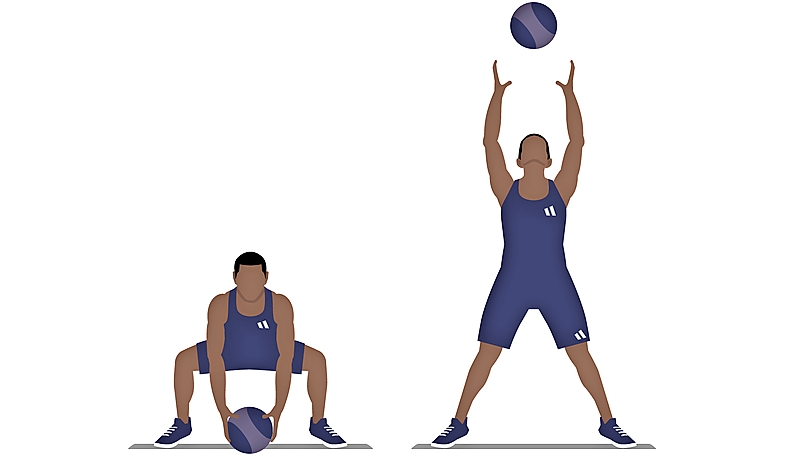 Medicine Ball Squat-n-Toss
Medicine Ball Squat-n-Toss
Increases power, reaction, and coordination
Stand with feet hip-width apart, knees slightly bent, and hold the medicine ball with two hands in front of your chest. Sit back in squat position, keeping chest lifted, and lower the ball to the floor. Stand up with an explosive movement while tossing ball up over your head. Catch the ball at chest level and sit back to squat position.
Dead Weight Medicine Ball Slams
Increases power
Stand with your feet shoulder-width apart, knees slightly bent, with a nonbounce medicine ball held overhead. Throw the ball down to the ground in front of your feet with as much force as possible. Exhale during the movement and contract the abs. Lift the medicine ball back to the starting position and repeat.
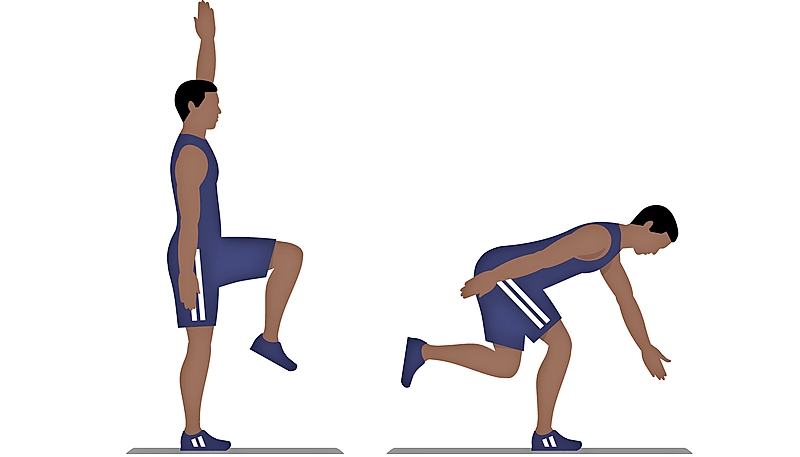 Balance and Reach
Balance and Reach
Increases balance and coordination
Assume a single-leg stance on the right, with leg slightly bent, left arm above head, and left leg bent at 90 degrees. Tighten glutes and core, then slowly sit back, extending left leg behind and left arm in front. Stabilize for two seconds and bring foot back toward opposite foot. Repeat on opposite side.
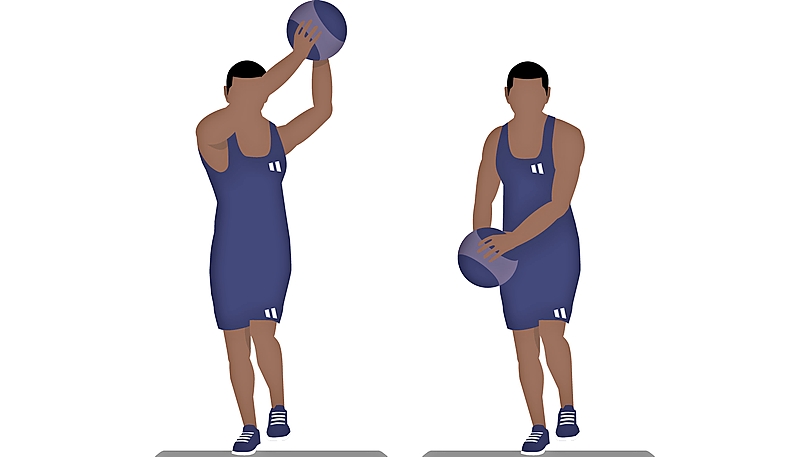 Medicine Ball Balance & Chop
Medicine Ball Balance & Chop
Increases balance and coordination
Assume a single-leg stance. Holding a medicine ball, keep your lower body planted and twist from the waist toward the left and extend your arms behind the left side of your head. Then twist to the right, bringing the medicine ball to the right
side of the waist.
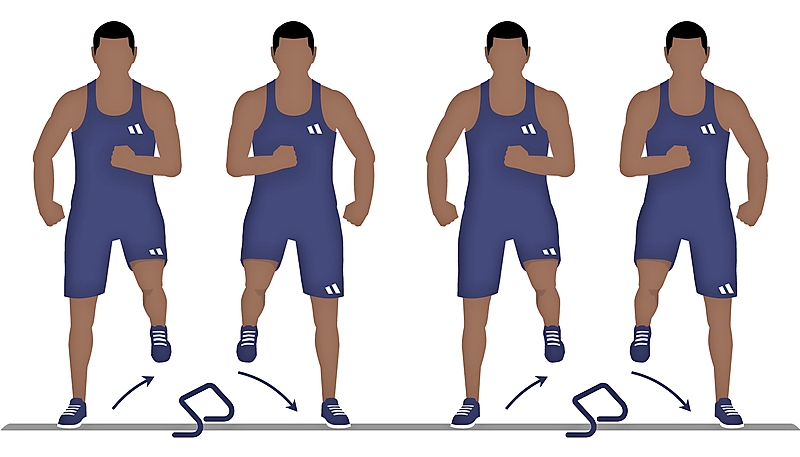 Mini Hurdle Challenge
Mini Hurdle Challenge
Increases agility, speed, and balance
Set up three mini hurdles in a straight line, about two feet apart. Face sideways and jump over each hurdle, touching the ground with both feet each time. Repeat going the opposite direction.
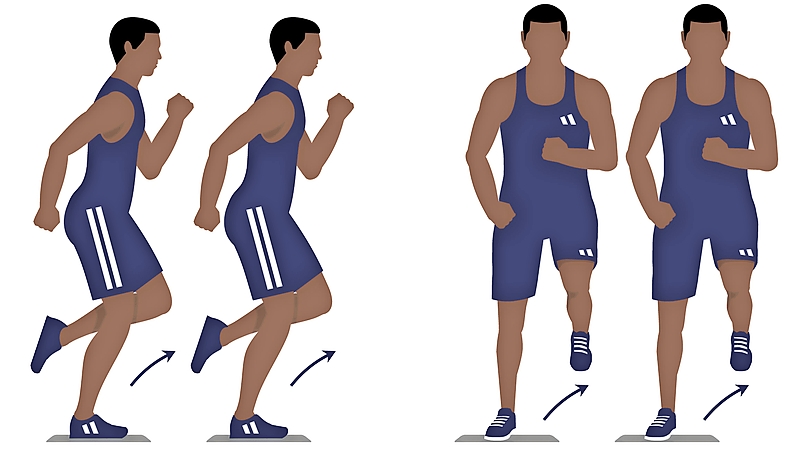 Agility Ring Hops
Agility Ring Hops
Increases agility, coordination, speed, and power
Set up two rings in a straight line, touching each other. Assume a single-leg stance and hop forward, landing with the right foot in the first ring, then the second ring, then out. Turn 180 degrees and hop back through the rings to the starting position. Repeat with left leg. Repeat again, hopping sideways through the rings on the next round.
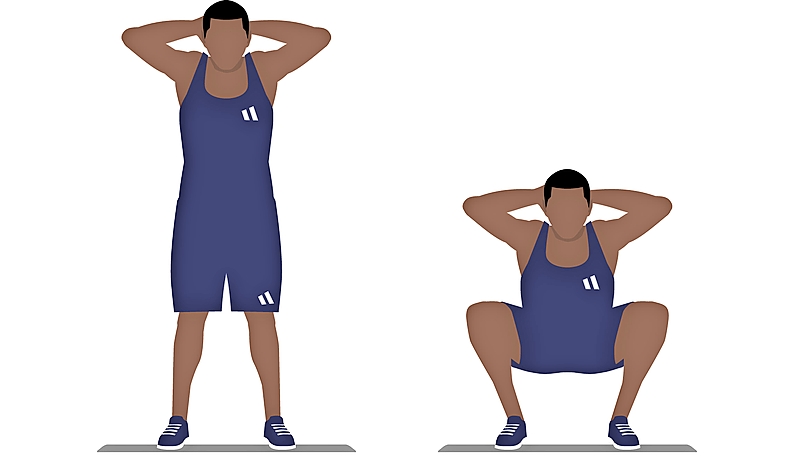 POWER Squat
POWER Squat
Increases power and speed
Stand with your feet slightly wider than hip width. Lower yourself slowly into a traditional squat, keeping your chest up and your knees behind your toes. Once the top of your thighs are parallel to the ground, hold that position for two seconds. Explosively drive back up into the starting position as quickly as possible.
aging effects
Several changes occur throughout the body as we age:
- Heart rate slows and blood vessels and arteries become stiffer.
- Bones lose density, increasing risk of osteoporosis, breaks, and fractures.
- Muscles lose mass and flexibility, leading to loss of strength and mobility and an increased risk of falls.
- The central nervous system slows, reducing power, reaction, and memory.


